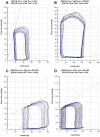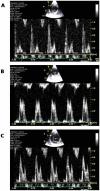3',4'-Dihydroxyflavonol antioxidant attenuates diastolic dysfunction and cardiac remodeling in streptozotocin-induced diabetic m(Ren2)27 rats
- PMID: 21829510
- PMCID: PMC3145674
- DOI: 10.1371/journal.pone.0022777
3',4'-Dihydroxyflavonol antioxidant attenuates diastolic dysfunction and cardiac remodeling in streptozotocin-induced diabetic m(Ren2)27 rats
Abstract
Background: Diabetic cardiomyopathy (DCM) is an increasingly recognized cause of chronic heart failure amongst diabetic patients. Both increased reactive oxygen species (ROS) generation and impaired ROS scavenging have been implicated in the pathogenesis of hyperglycemia-induced left ventricular dysfunction, cardiac fibrosis, apoptosis and hypertrophy. We hypothesized that 3',4'-dihydroxyflavonol (DiOHF), a small highly lipid soluble synthetic flavonol, may prevent DCM by scavenging ROS, thus preventing ROS-induced cardiac damage.
Methodology/principal findings: Six week old homozygous Ren-2 rats were randomized to receive either streptozotocin or citrate buffer, then further randomized to receive either DiOHF (1 mg/kg/day) by oral gavage or vehicle for six weeks. Cardiac function was assessed via echocardiography and left ventricular cardiac catheterization before the animals were sacrificed and hearts removed for histological and molecular analyses. Diabetic Ren-2 rats showed evidence of diastolic dysfunction with prolonged deceleration time, reduced E/A ratio, and increased slope of end-diastolic pressure volume relationship (EDPVR) in association with marked interstitial fibrosis and oxidative stress (all P<0.05 vs control Ren-2). Treatment with DiOHF prevented the development of diastolic dysfunction and was associated with reduced oxidative stress and interstitial fibrosis (all P<0.05 vs untreated diabetic Ren-2 rats). In contrast, few changes were seen in non-diabetic treated animals compared to untreated counterparts.
Conclusions: Inhibition of ROS production and action by DiOHF improved diastolic function and reduced myocyte hypertrophy as well as collagen deposition. These findings suggest the potential clinical utility of antioxidative compounds such as flavonols in the prevention of diabetes-associated cardiac dysfunction.
Conflict of interest statement
Figures









Similar articles
-
FT011, a new anti-fibrotic drug, attenuates fibrosis and chronic heart failure in experimental diabetic cardiomyopathy.Eur J Heart Fail. 2012 May;14(5):549-62. doi: 10.1093/eurjhf/hfs011. Epub 2012 Mar 14. Eur J Heart Fail. 2012. PMID: 22417655
-
Therapeutic targeting of oxidative stress with coenzyme Q10 counteracts exaggerated diabetic cardiomyopathy in a mouse model of diabetes with diminished PI3K(p110α) signaling.Free Radic Biol Med. 2015 Oct;87:137-47. doi: 10.1016/j.freeradbiomed.2015.04.028. Epub 2015 Apr 30. Free Radic Biol Med. 2015. PMID: 25937176
-
Targeting the upregulation of reactive oxygen species subsequent to hyperglycemia prevents type 1 diabetic cardiomyopathy in mice.Free Radic Biol Med. 2013 Jul;60:307-17. doi: 10.1016/j.freeradbiomed.2013.02.021. Epub 2013 Feb 26. Free Radic Biol Med. 2013. PMID: 23454064
-
Cardiac oxidative stress in diabetes: Mechanisms and therapeutic potential.Pharmacol Ther. 2017 Apr;172:50-62. doi: 10.1016/j.pharmthera.2016.11.013. Epub 2016 Dec 1. Pharmacol Ther. 2017. PMID: 27916650 Review.
-
Therapeutic potential of targeting oxidative stress in diabetic cardiomyopathy.Free Radic Biol Med. 2021 Jun;169:317-342. doi: 10.1016/j.freeradbiomed.2021.03.046. Epub 2021 Apr 25. Free Radic Biol Med. 2021. PMID: 33910093 Free PMC article. Review.
Cited by
-
Myocardial dysfunction in patients with type 2 diabetes mellitus: role of endothelial progenitor cells and oxidative stress.Cardiovasc Diabetol. 2012 Dec 5;11:147. doi: 10.1186/1475-2840-11-147. Cardiovasc Diabetol. 2012. PMID: 23217199 Free PMC article.
-
Heme oxygenase-1 prevents cardiac dysfunction in streptozotocin-diabetic mice by reducing inflammation, oxidative stress, apoptosis and enhancing autophagy.PLoS One. 2013 Sep 24;8(9):e75927. doi: 10.1371/journal.pone.0075927. eCollection 2013. PLoS One. 2013. PMID: 24086665 Free PMC article.
-
Flavonols in the Prevention of Diabetes-induced Vascular Dysfunction.J Cardiovasc Pharmacol. 2015 Jun;65(6):532-44. doi: 10.1097/FJC.0000000000000180. J Cardiovasc Pharmacol. 2015. PMID: 25387248 Free PMC article. Review.
-
Oxidative Stress State Is Associated with Left Ventricular Mechanics Changes, Measured by Speckle Tracking in Essential Hypertensive Patients.Oxid Med Cell Longev. 2015;2015:502107. doi: 10.1155/2015/502107. Epub 2015 Oct 4. Oxid Med Cell Longev. 2015. PMID: 26504504 Free PMC article.
-
Searching for Effective Treatments in HFpEF: Implications for Modeling the Disease in Rodents.Pharmaceuticals (Basel). 2023 Oct 12;16(10):1449. doi: 10.3390/ph16101449. Pharmaceuticals (Basel). 2023. PMID: 37895920 Free PMC article. Review.
References
-
- Bell DSH. Heart Failure: The frequent, forgotten, and often fatal complication of diabetes. Diabetes Care. 2003;26:2433–2441. - PubMed
-
- Kannel WB, McGee DL. Diabetes and cardiovascular risk factors: the Framingham study. Circulation. 1979;59:8–13. - PubMed
-
- Hayat SA, Patel B, Khattar RS, Malik RA. Diabetic cardiomyopathy: mechanisms, diagnosis and treatment. Clin Sci. 2004;107:539–557. - PubMed
-
- Rubler S, Dlugash J, Yuceoglu YZ, Kumral T, Branwood AW, et al. New type of cardiomyopathy associated with diabetic glomerulosclerosis. Am J Cardiol. 1972;20:595–602. - PubMed
Publication types
MeSH terms
Substances
LinkOut - more resources
Full Text Sources
Medical
Miscellaneous

